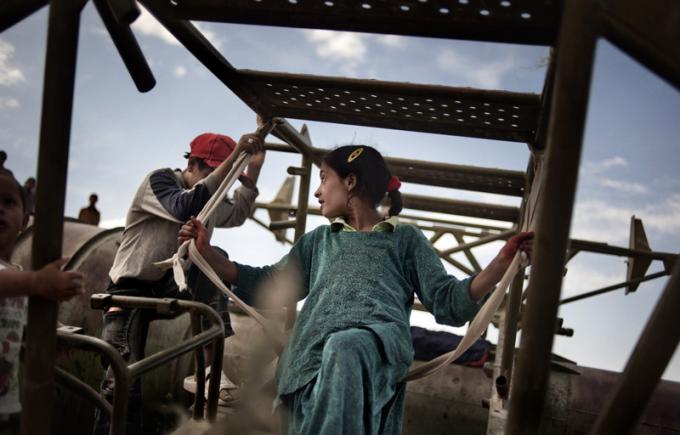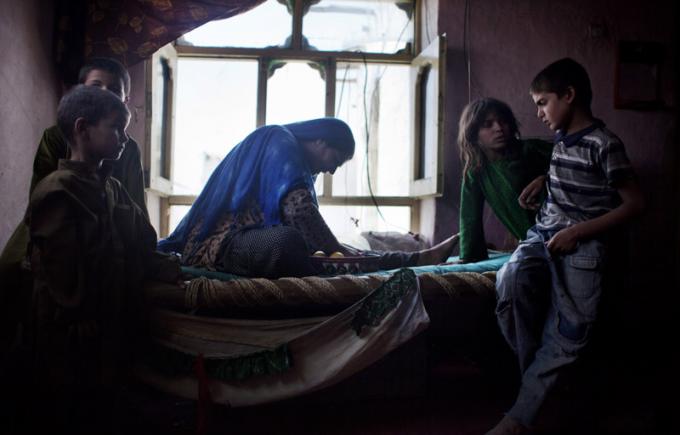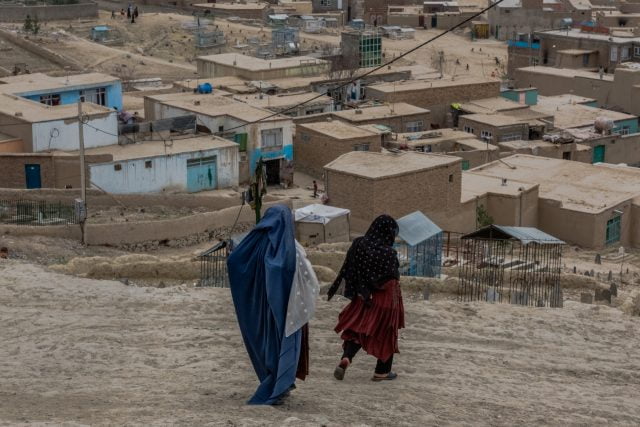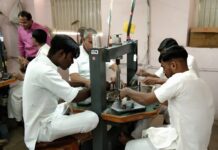Zanabad, a rocky summit 15 kilometers southeast of the capital city Kabul, literally means the ‘city of women’. Afghanistan widows are often rejected as immoral or regarded as burdens: they suffer violence, expulsion, ostracism and sometimes forced remarriage, often with a brother-in-law.
It is estimated there are as many as 2.5 million widows in Afghanistan today. Often uneducated and cloistered at home, the women have few options if their husbands die.

As a means of escape from all this, the first women settled on the stony slope of Zanabad in the 1990s. After so many years, today it is known as Afghanistan’s ‘hill of widows’, home to a cluster of women who have eked out independence in a society that shuns and condemns them as immoral.
The beginning
The matriarch of Zanabad, Bibi ul-Zuqia, better known as Bibikoh, arrived here 15 years ago after two of her husbands were killed consecutively, first by a rocket and the second, to who she was remarried post the death of the first, by a sudden illness. Bibikoh passed away last year in 2016 and her daughter, Anissa Azimi is the forebearer of the matriarchal torch.
Also read: Alive Again: Widows play Holi in Varanasi
But there is a twist in the tale. In a very, very rare occurrence in conservatively patriarchal Afghanistan, Anissa happens to be married and with her husband living. Yet, she chose life with the widows of Zanabad. Their house is one of the first when you arrive in Zanabad by a broken track, at the bottom of a passage barred with a tarp to protect privacy.
Why and how Zanabad, of all places?
Well, nobody knows the answer to that, Anissa admits.

After the husband’s death, Afghanistan widows are shunned unanimously. Most women have no education and no money making it very difficult for them to make a living. For someone as such, Kabul is a very expensive and no less terrifying place. Rents are sky-high, there are no jobs and all this tantamount to no respect.
Land in Zanabad is very cheap. But most importantly, all the women live here in a tightly-knit community and here, they have a permanent address. For them, “Zanabad is a safe haven”.
Life in Zanabad
Bibikoh organised literacy classes, sewing workshops and food distributions with the support of an NGO, says researcher Naheed Esar.
Humaira, a young, shy widow in her late 30s, recalls this time as dawa-ye talkh, bitter medicine. The construction work was often “beyond her physical ability” and caused her “physical trouble” – but she also said that building her own house in this community had “cured” her in the long run as it gave her life-long shelter.

A small military post guards the hill. It’s good for protection, Anissa says. The Taliban are not very far down the road. The irony is that even authority cannot be relied upon, always.
Anissa recalls that the policemen have torn down their painstakingly built houses at least eight or nine times by now. The only way to keep them off is a monetary bribe. Even with all this, Zanabad has become their own personal heaven, a place to eat, sleep and above all, live free.
Life for Afghanistan widows outside Zanabad
At best, the Afghanistan widows receive $150 a year from the government if their husband was killed while fighting. They survive by doing household chores, a little sewing, or by sending their children to beg, in the bazaar.
A policy providing aid for poor women was approved in 2008 but never ratified. A few non-governmental programs help the widows find a little autonomy.
In front of the former royal palace in Kabul, the United Nations Development Program (UNDP) created a small gardening cooperative where some 100 particularly poor women learned to work the land. Eighty percent of them are widows.
A lovely tale of sisterhood
The safe environment of Zanabad, Humaira said, created a sense of sisterhood among the members of the community.
She gave the example of two young women, a widow and a divorcee, who came from other parts of Kabul to live on the hill. The other widows consistently accompanied the two women in their daily activities; sometimes they even spent the nights with them to make them feel safe.

Some widows in the community described their shared pain as the main cause for the sisterhood felt in the community, but the shared work and assistance to each other also contributed. Each of these hapless widows have become each other’s sar-posh (cover).
The 500 plus widows of Zanabad are defying insurmountable odds by sheer willpower which probably only women are capable of. In the words of Anissa, “everywhere there is war. People are joining us.”
Image credits: Google
You may also like to read:
http://edtimes.in/2017/02/overwhelming-indian-patriotism-balochis-vande-maataram/




























